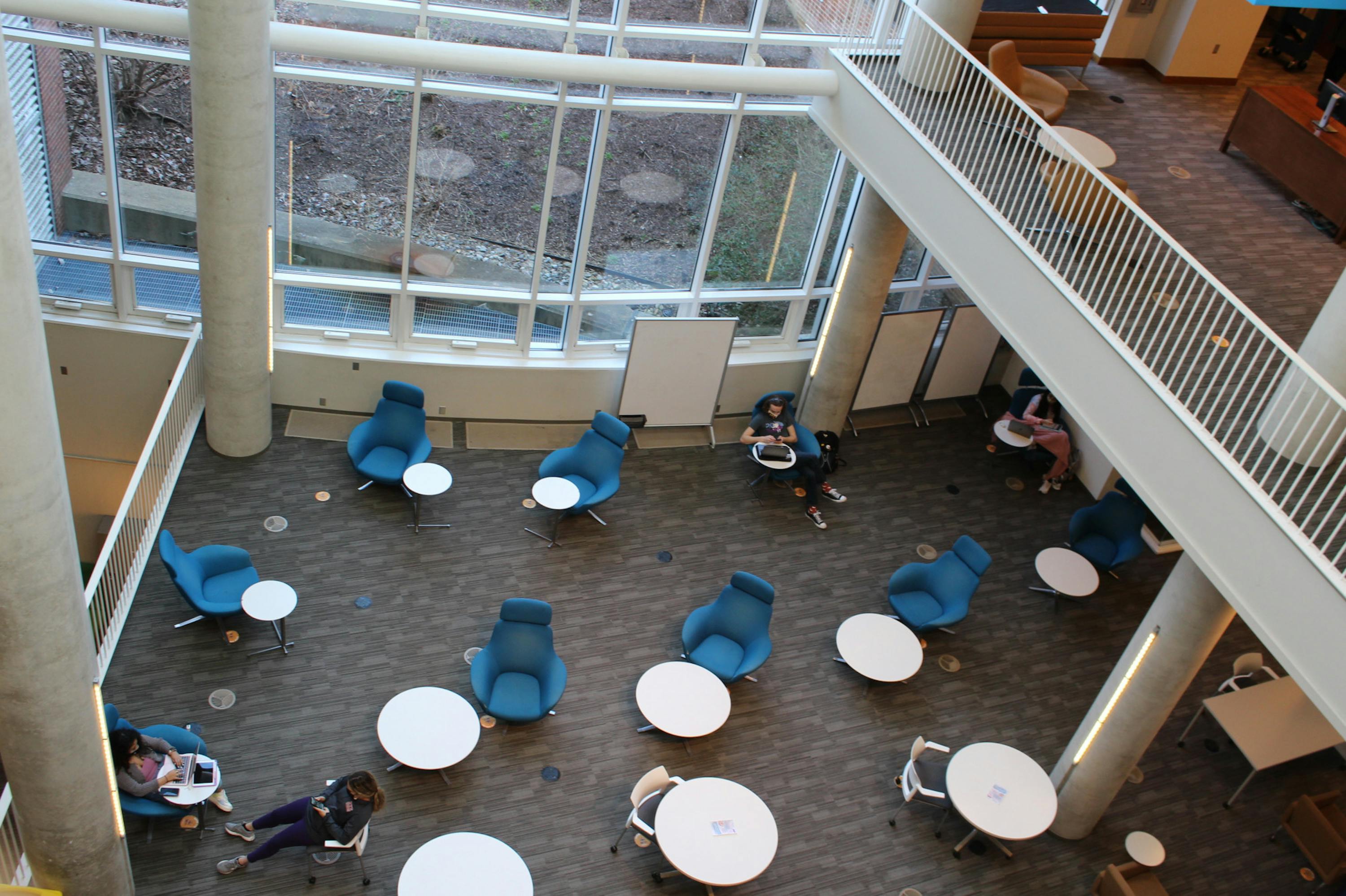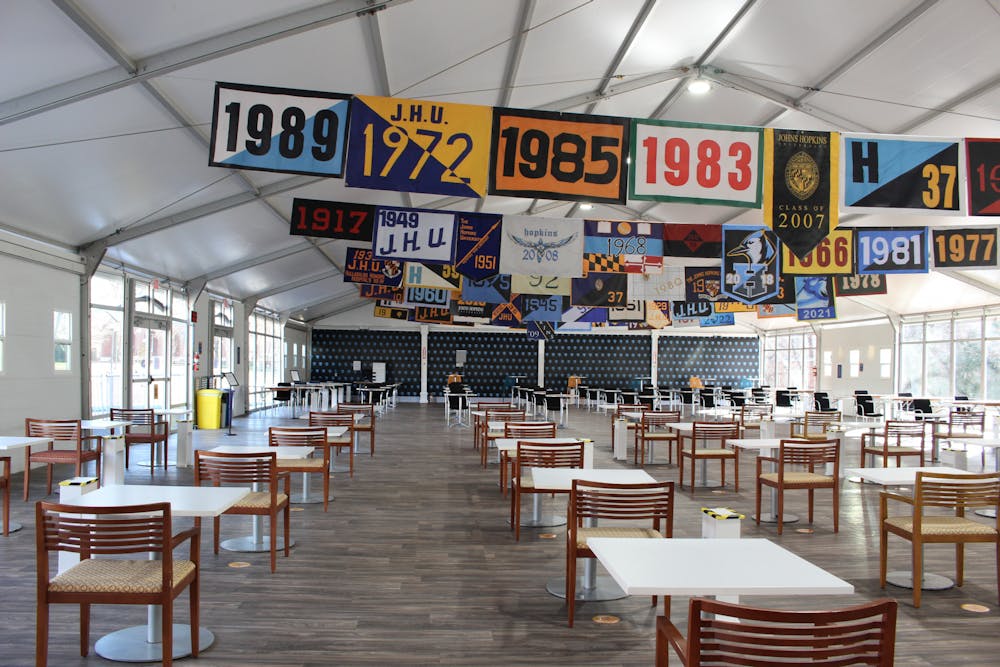As part of the second phase of its reopening plan, Hopkins opened several on-campus spaces to be used for small in-person gatherings and study spaces in early February. Despite initial delays due to a COVID-19 spike and snowstorms, the Milton S. Eisenhower (MSE) Library, Brody Learning Center, Hutzler Reading Room (HUT), large tent in the Freshman Quad and smaller temporary outdoor structures around campus have opened with limited hours.
Freshman Elaina Regier believes the University should provide more spaces for group work.
“There are only two study rooms in Brody with a capacity of more than one person,” she said. “I’m a lot more comfortable working with other people in a private study space than in one of the public spaces.”
Likewise, freshman Lauren Zou commented on some of the negative impacts of the de-densification measures.
“Brody is a very collaborative space, but because of COVID, there’s barely any talking or it’s hard to work together,” she said. “Usually, it’s a place to meet up with people or make new friends and I feel like Brody doesn’t serve this purpose anymore.”

ELIZABETH IM/PHOTO EDITOR
Even Brody, usually packed with students, has been largely empty since reopening in February.
MSE, Brody and the HUT are open from 8:30 a.m. until 10 p.m. Before the pandemic, MSE and HUT closed at midnight. Brody was open 24 hours.
In an email to The News-Letter, Assistant Vice President of External Relations for the Office of Communications Karen Lancaster noted that the University identified over 800 physically-distant study spaces on campus. According to her, the peak occupancy in MSE and Brody is around 200 people.
Junior Amanda Yuen stated that the hours of operation should be extended.
“At the moment, there are enough study spaces. The biggest challenge about Hopkins study spaces is the fact that they close at 10 p.m. It would be great if the hours could at least be extended to midnight,” she said.
The 9,000-square-foot tent in the Freshman Quad — referred by the University as the Freshman Quad annex — also has remained mostly empty.
Freshman Zandy Wong stated that the temporary study space has been a welcome addition, even if it is underused.
“I think the tent is quite useful, even if it’s not being used a lot, since it’s very accessible to the people living in the AMRs. I have used it once or twice,” she said.
Freshman Cierra Gladden noted that students have been reluctant to use the tent due to the colder weather and availability of more attractive study spaces.
“The weather is a big factor why it’s not being used right now. Even though it’s heated, there’s still a bit of a draft in the tent and it can get cold,“ she said. “The Freshman Quad annex was a good idea. It’s just that when places like Brody and the library are open, the idea of being in a study space rather than a tent is more attractive.”

Zou, however, stated that the tent has been a waste of space that could be used for other purposes.
“Even on the first day when in-person stuff was opening up, no one was using it. I honestly think it’s a waste of really good space. If possible, maybe by de-densifying it such as having less tables, making it an indoor dining space,” she said.
The University could permit physically distanced dining inside the tent in the future, according to Lancaster. Brody Cafe’s Daily Grind will also be reopening soon. While Baltimore City currently limits indoor dining at 25% capacity, Hopkins dining is takeout-only and there are no indoor dining spaces available.
Regier, a Student Government Association (SGA) senator, reported that the administrators and SGA are looking into converting the tent for an alternative purpose.
“At the SGA meeting on Feb. 23, some of the admin working on student programming came to talk about what their plans are for this spring and did say they’re looking at using the tent as a programming space and as an indoor dining option when it’s safe,” she said. “The main goal with the tent was to make up for all of the lost capacity in other study locations, but most students are also finding it easier to study in their room since we all have singles this year.”
Zou believes indoor dining could provide opportunities for social interactions.
“They should de-densify the spaces: have two people a table, or have them distanced from each other or have plastic panes in between them,” she said. “Hopkins has made it very hard for people to meet each other, and eating is one of the best ways to meet people.”





